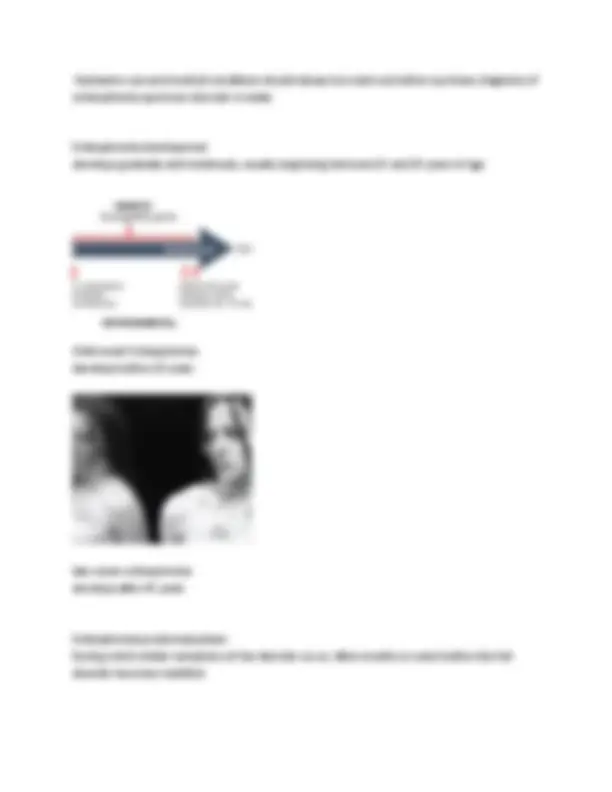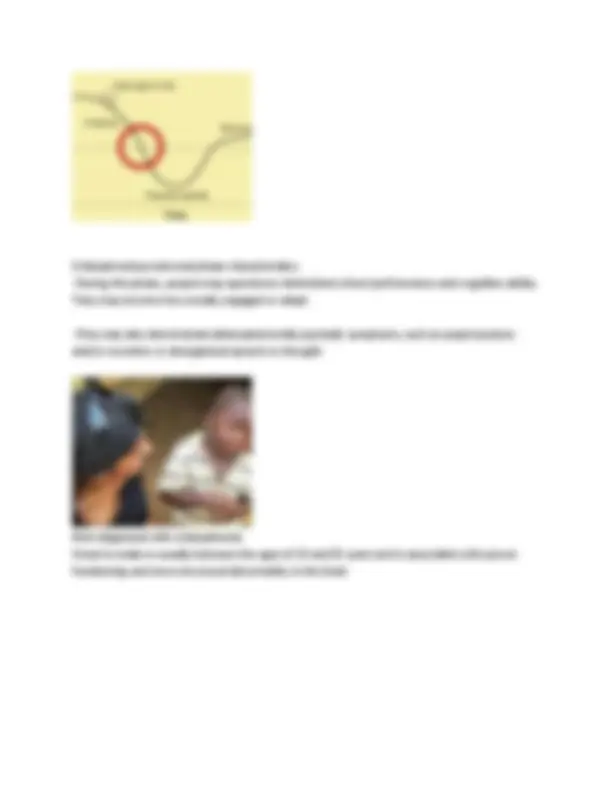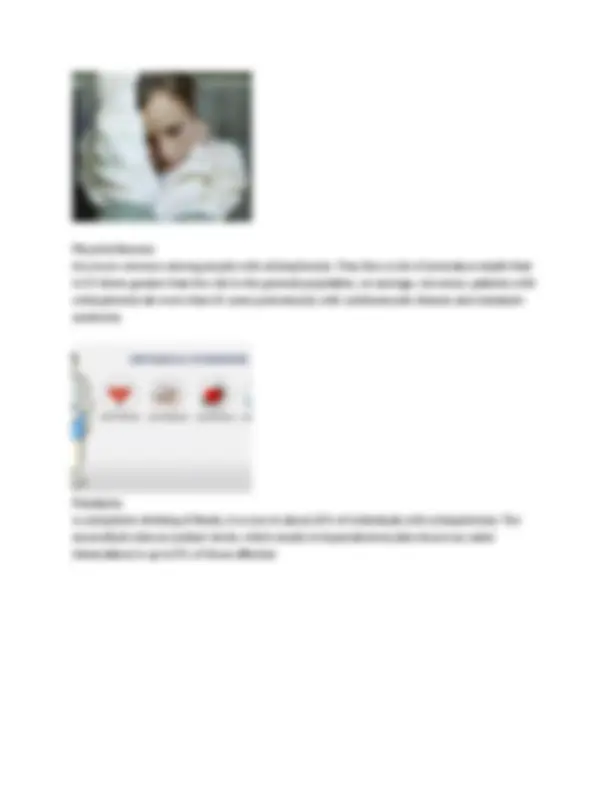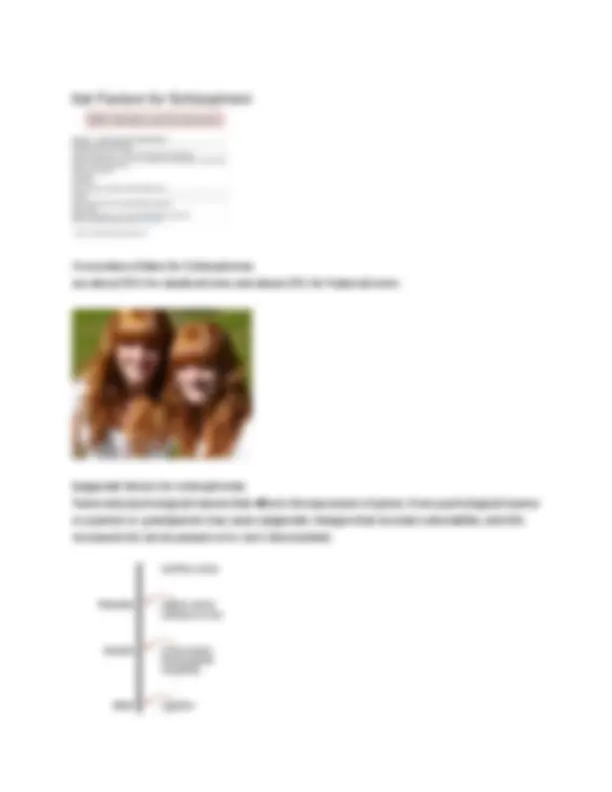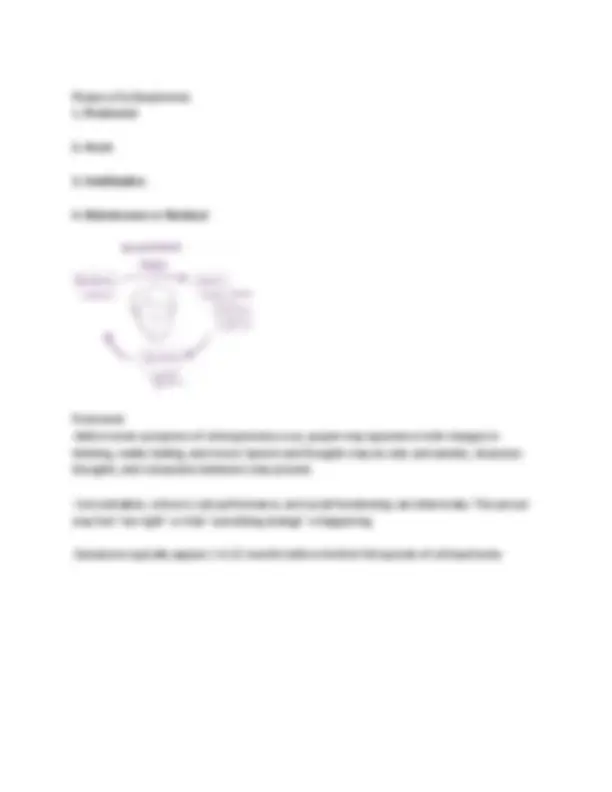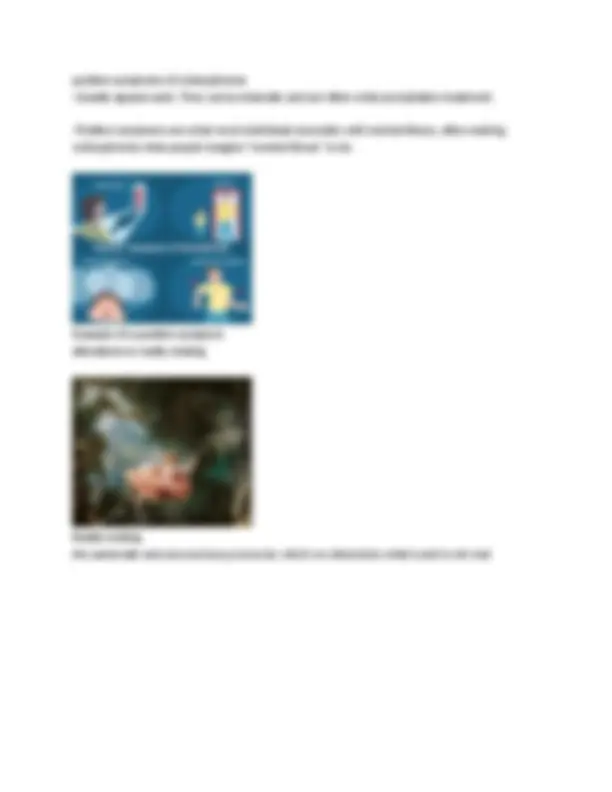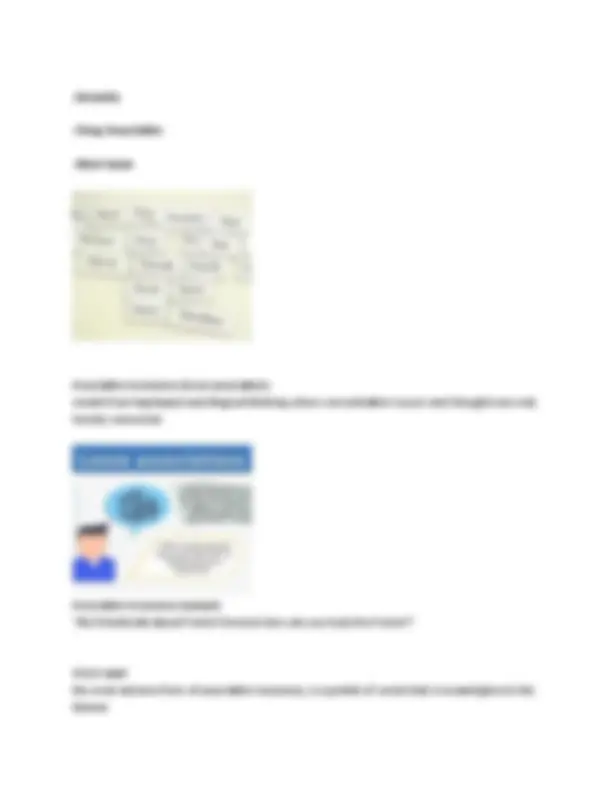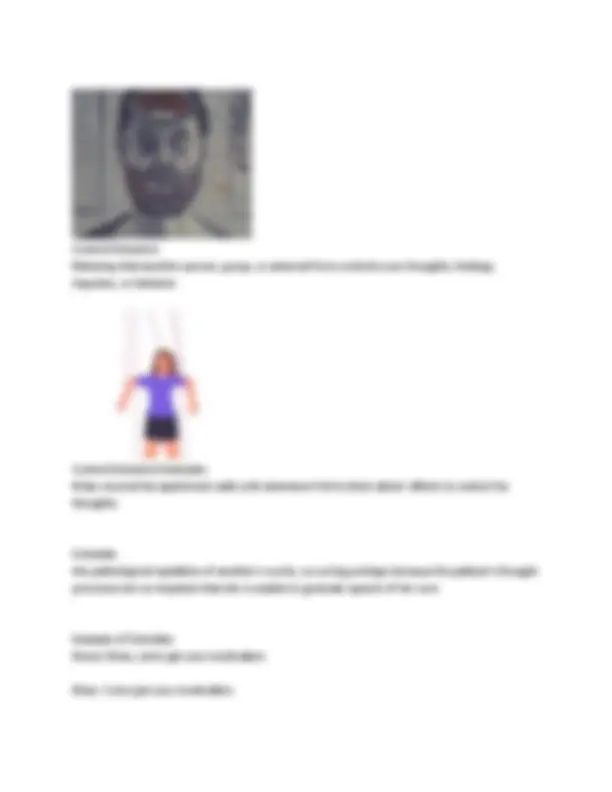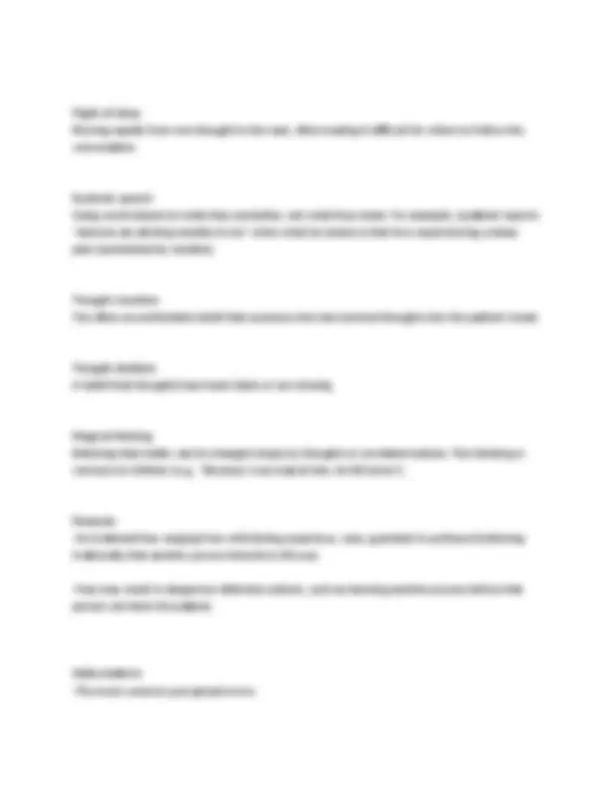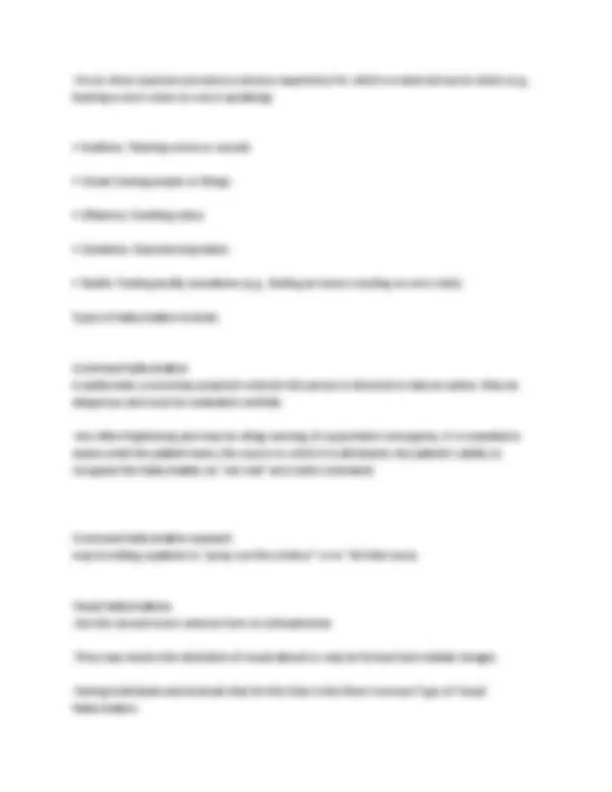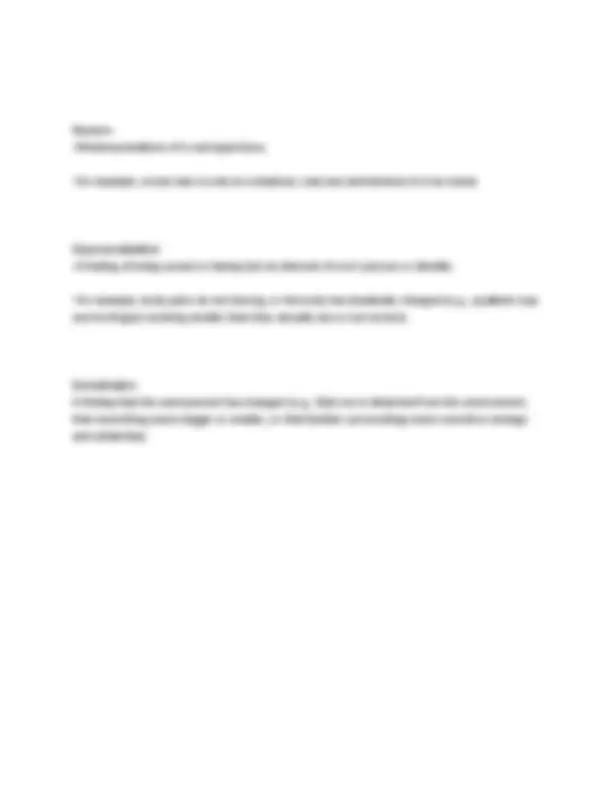Download Test Bank For Essentials of Psychiatric Mental Health Nursing (3rd Edition by Varcarolis) and more Exams Nursing in PDF only on Docsity!
Test Bank For Essentials of Psychiatric Mental Health Nursing (3rd
Edition by Varcarolis)
Schizophrenia Spectrum Disorders
- Are disorders that share features with schizophrenia.
- They are characterized by psychosis. psychosis refers to altered cognition, altered perception, and/or an impaired ability to determine what is or is not real Delusional disorder
is characterized by delusions (i.e., false thoughts or beliefs) that have lasted 1 month or longer. types of delusions in delusional disorder Grandiose, Persecutory, Somatic, and Referential Themes Brief psychotic disorder
- Involves the Sudden Onset of at Least One of the following: Delusions, Hallucinations, Disorganized Speech, and Disorganized or Catatonic (Severely Decreased Motor Activity) Behavior.
- The symptoms must last Longer than 1 Day, but No Longer than 1 Month, with the expectation of a Return to Normal Functioning. schizophreniform disorder
- Substance use and medical conditions should always be ruled out before a primary diagnosis of schizophrenia spectrum disorder is made. Schizophrenia development develops gradually and insidiously, usually beginning between 15 and 25 years of age Child onset Schizophrenia develops before 15 years late-onset schizophrenia develops after 40 years Schizophrenia prodromal phase During which milder symptoms of the disorder occur, often months or years before the full disorder becomes manifest.
Schizophrenia prodromal phase characteristics
- During this phase, people may experience diminished school performance and cognitive ability. They may become less socially engaged or adept.
- They may also demonstrate attenuated (mild) psychotic symptoms, such as suspiciousness and/or eccentric or disorganized speech or thought Men diagnosed with schizophrenia Onset in males is usually between the ages of 15 and 25 years and is associated with poorer functioning and more structural abnormality in the brain
Substance use disorders
- Particularly alcohol and marijuana, occur in nearly half of affected individuals. Substance use may be a form of self-treatment for certain symptoms (e.g., social discomfort) or side effects (e.g., sedation).
- It is associated with poorer treatment adherence and prognosis and with increased relapse, incarceration, homelessness, violence, and suicide. Anxiety, depression, and suicide
- Co-occur frequently in schizophrenia. At least 20% of people with schizophrenia attempt suicide, whereas 5% to 10% die by suicide, a rate five times that of the general population.
- Suicide attempts are More Common within 3 Years of Diagnosis and especially Upon Discharge After the First Episode of Schizophrenia.
Physical illnesses Are more common among people with schizophrenia. They face a risk of premature death that is 3.5 times greater than the risk in the general population; on average, moreover, patients with schizophrenia die more than 20 years prematurely with cardiovascular disease and metabolic syndrome. Polydipsia is compulsive drinking of fluids; it occurs in about 20% of individuals with schizophrenia. The excess fluid reduces sodium levels, which results in hyponatremia (also known as water intoxication) in up to 5% of those affected.
Concordance Rates for Schizophrenia are about 50% for identical twins and about 15% for fraternal twins Epigenetic factors for schizophrenia Toxins and psychological trauma that affects the expression of genes. Even psychological trauma in a parent or. grandparent may cause epigenetic changes that increase vulnerability, and this increased risk can be passed on to one's descendants
Amphetamines and cocaine Enhance dopamine activity and can induce psychosis or precipitate schizophrenia. drug abuse particularly marijuana, can increase the risk of schizophrenia in biologically vulnerable individuals Phencyclidine (PCP) induces a state that resembles schizophrenia, suggesting a possible role of glutamate in the pathophysiology of schizophrenia
Infection during or after pregnancy increases the risk of mental illness
- A father above 35 years of age at the child's conception
- Being born during late winter or early spring Other factors associated with an increased risk of schizophrenia include: Environmental Factors for Schizophrenia Schizophrenia often manifests at times of developmental and family stress, such as when a person is beginning college or moving away from home. Social, psychological, and physical stressors may play a significant role in both the severity and course of the disorder and the person's quality of life. Tetrachloroethylene (PCE) used in dry cleaning and to line water pipes and sometimes found in drinking water, are also believed to contribute to the development of schizophrenia in vulnerable people
Phases of Schizophrenia
**1. Prodromal
- Acute
- Stabilization
- Maintenance or Residual** Prodromal
- Before acute symptoms of schizophrenia occur, people may experience mild changes in thinking, reality testing, and mood. Speech and thoughts may be odd, and anxiety, obsessive thoughts, and compulsive behaviors may present.
- Concentration, school or job performance, and social functioning can deteriorate. The person may feel "not right" or that "something strange" is happening.
- Symptoms typically appear 1 to 12 months before the first full episode of schizophrenia.
Maintenance or Residual
- In this phase, the condition has stabilized and a new baseline may be established.
- Positive symptoms (described later) are usually significantly diminished or absent, but negative and cognitive symptoms continue to be a concern.
- Ideally, recovery with few or no residual symptoms will occur, and the patient is again able to live independently or with family. 4 main symptom categories in schizophrenia: **- Positive Symptoms
- Negative Symptoms
- Cognitive Symptoms
- Affective Symptoms** Positive symptoms The presence of symptoms that should not be present. Positive symptoms include hallucinations, delusions, paranoia, or disorganized or bizarre thoughts, behavior, or speech. Negative symptoms The absence of qualities that should be present. Negative symptoms include the inability to enjoy activities (anhedonia), social discomfort, or lack of goal-directed behavior.
Cognitive symptoms Subtle or obvious impairment in memory, attention, thinking (e.g., disorganized or irrational thoughts); impaired executive functioning (e.g., impaired judgment, impulse control, prioritization, and problem solving). Affective symptoms Symptoms involving emotions and their expression
Impaired reality testing the person experiences hallucinations or delusions as real Delusions are false beliefs that are held despite a lack of evidence to support them alterations in speech in schizophrenia
- Associative looseness - Neologisms
**- Echolalia
- Clang Association
- Word Salad** Associative looseness (loose association) results from haphazard and illogical thinking where concentration is poor and thoughts are only loosely connected. Associative looseness example "My friends talk about French fries but how can you trust the French?" Word salad the most extreme form of associative looseness, is a jumble of words that is meaningless to the listener


